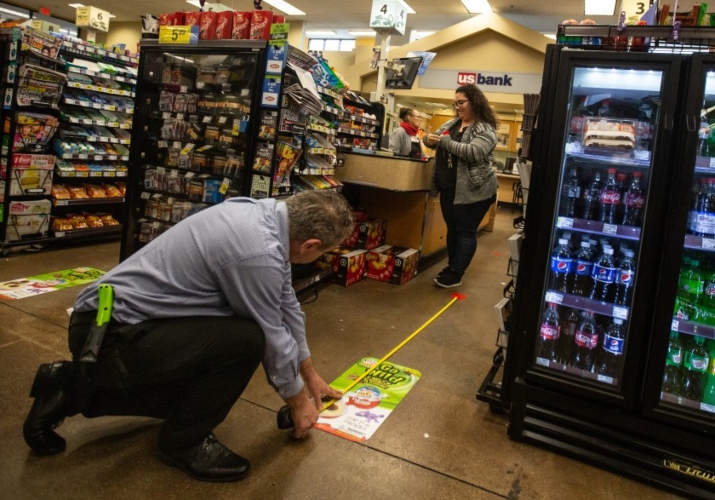Grocery Retail: Four Waves Of Change Are Coming
Like many, I first want to say how proud I am to be associated with the retail food industry. The efforts on the part of everyone in the industry to keep stores in stock, associates safe and customers served as best as possible is nothing short of heroic. In times of great challenges, it becomes abundantly clear how elemental food is in our lives and as part of the fabric of the communities that it serves.
I believe that there will be four waves of significant change that will impact the industry in the coming months. And, as discussed before, the only real question is just how severe these waves will be. This will be dictated by the degree of severity of this global pandemic.
- Wave One—Hoarding. We are in the middle of wave one, which involves the hoarding of products and the abundance of needs from consumers driven by both the fear and reality of the crisis. As many retailers I’ve talked to have described this, it’s like “the storm scare that never ends”. Predictably, before an anticipated weather event, consumers will stock up on needed supplies, unsure of how long they will be without power or access to goods. This particular storm scare is now in about its fourth week and shows little signs of abating. And, it’s important to note that parts of the country are experiencing this crisis slightly ahead or behind others. We will see enormous sales gains from food retail being reported for the first quarter, driven by an extraordinary March. We are also correspondingly seeing a huge spike in online ordering. Grocery retail will almost instantly move from a relatively anemic 4% of revenue done on-line to double this in very short order. Whether e-commerce can hold on to these gains is for further discussion.
- Wave Two—The “Almost” Normal. As the hoarding begins to abate (enough of the toilet paper stocking up, people!), grocery retail is beginning to emerge to a steady state with some extraordindary new conditions. Special hours for Seniors (and now, in a wonderful addition, first responders), the monitoring of customer counts, appropriate social distancing at the service counters and checkstands, etc., are becoming commonplace. But, so are the temporary closures of salad bars, hot and cold food bars and the replacement of bulk and single serve items to pre-packaged as “contactless” service becomes entrenched in our collective vocabularies. While this would normally presage fairly significant sales declines, another countervailing factor is at work. The (likely temporary) shift of sales from food away from home (the beleaguered restaurant industry) to food at home. Since consumers can’t dine at a restaurant, many meals are being prepared and created at home. While this will hopefully (for the sake of the massive foodservice industry) not be permanent, it likely means that food retail will continue to hold on to sales gains for some period of time.
- Wave Three—Recession. Sadly, the economic data will soon show us that we have quickly entered into a recession as unemployment spikes and GDP craters. Again, the length and severity of the recession is unknown but it will likely have impact for an extended period of time. Retailers need to quickly dust off their 2008-2009 recession playbooks to prepare. Expect to see big increases in private label sales as consumers trade down and even greater growth in price oriented formats (good news for the Costco’s, Walmart’s, Trader Joe’s and Aldi’s of the world) but also an opportunity for conventional retailers to proactively respond by offering value early.
- Wave Four—The New, New Normal. When all of this is finally behind us, what does steady state retail look like a few years from now? Great disruptions (and a pandemic certainly qualifies) tends to act as an accelerator for a number of latent trends that were already in the market. E-commerce in grocery likely scales at a much faster rate. But, in responding to the value component, order on-line and pick-up in store offers a more value driven (and safer) way to deliver product. Contactless experiences might become the norm. Expect a huge increase in touch free experiences (Apple Pay and the like) and a decrease in cash transactions. It could be a huge boost to technology services like Amazon Go which reduce interaction with associates. It might cause a massive rethinking of how a grocery store looks and feels if food safety becomes a tantamount concern. Perhaps the next generation supermarket is one-third pick-up, one-third delivery staging and a much more automated process throughout?
I will discuss the fourth wave in more detail in a future blog. It is clear that this could drive long-term changes for retail’s largest sector.

Todd R. Hale
April 4, 2020 at 1:27 pmNeil: very nice and straightforward assessment.